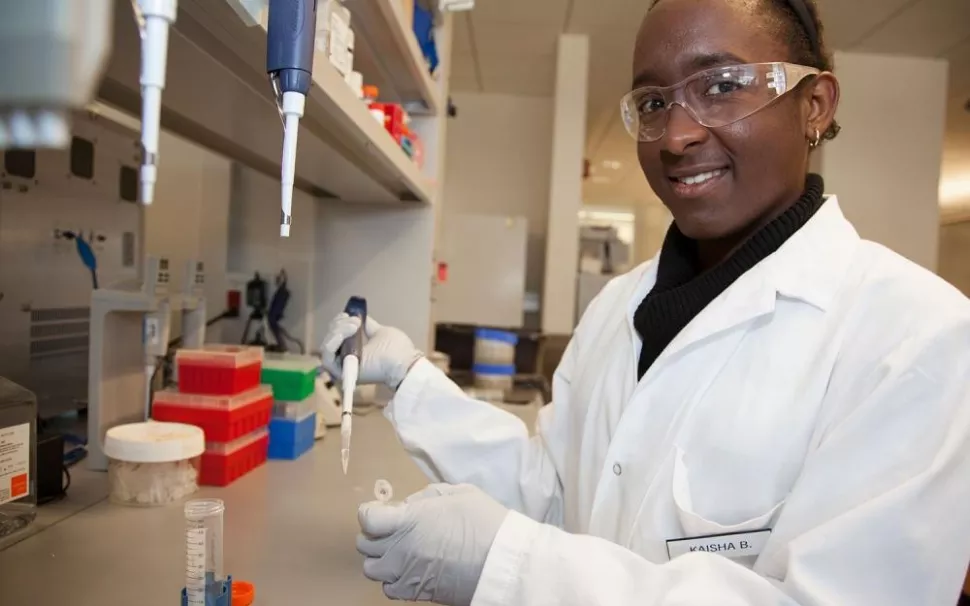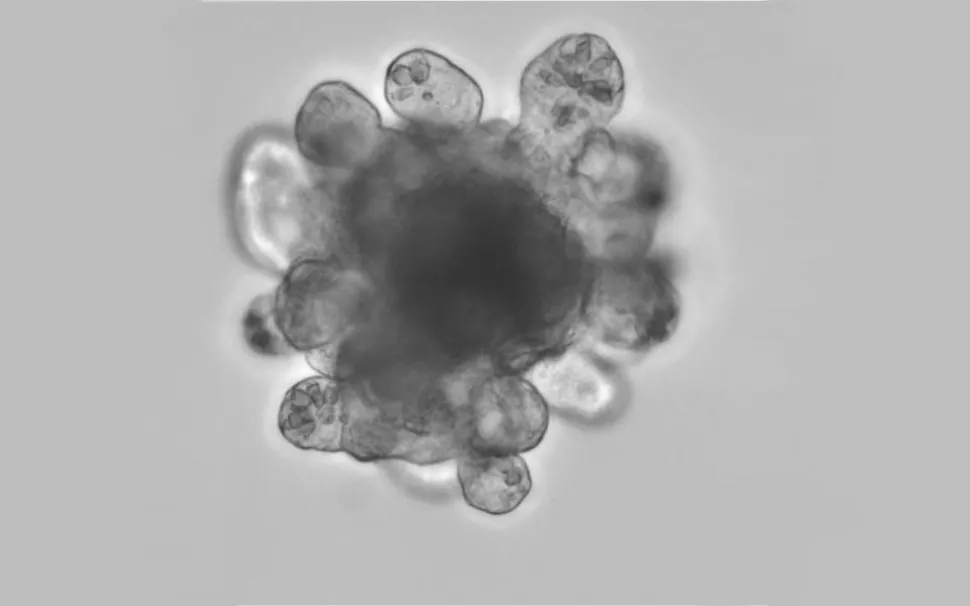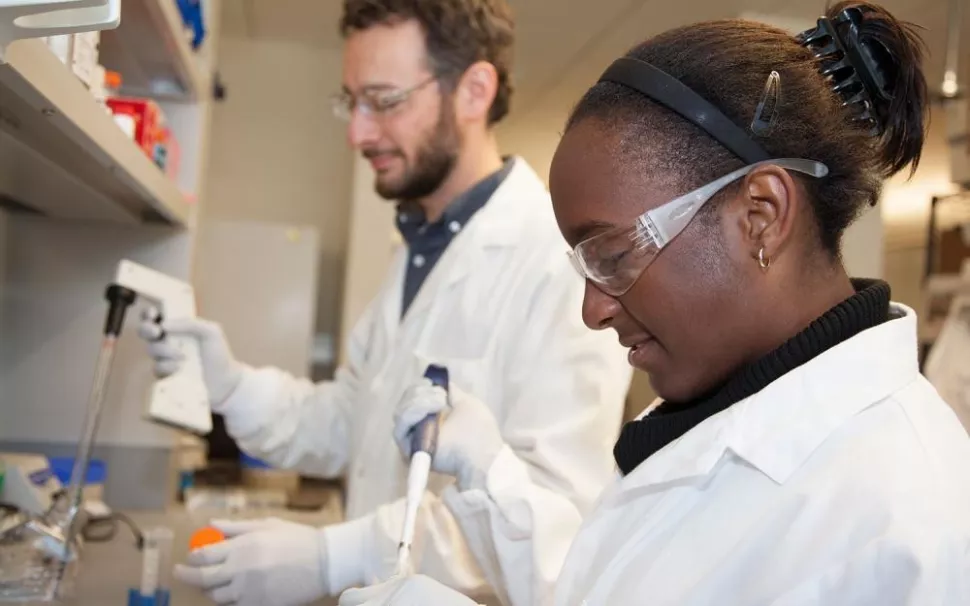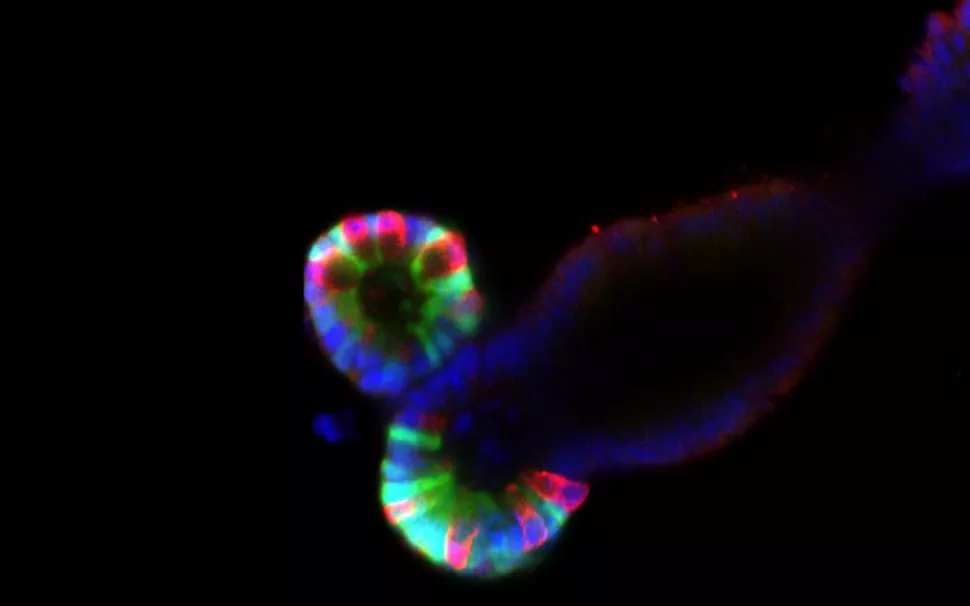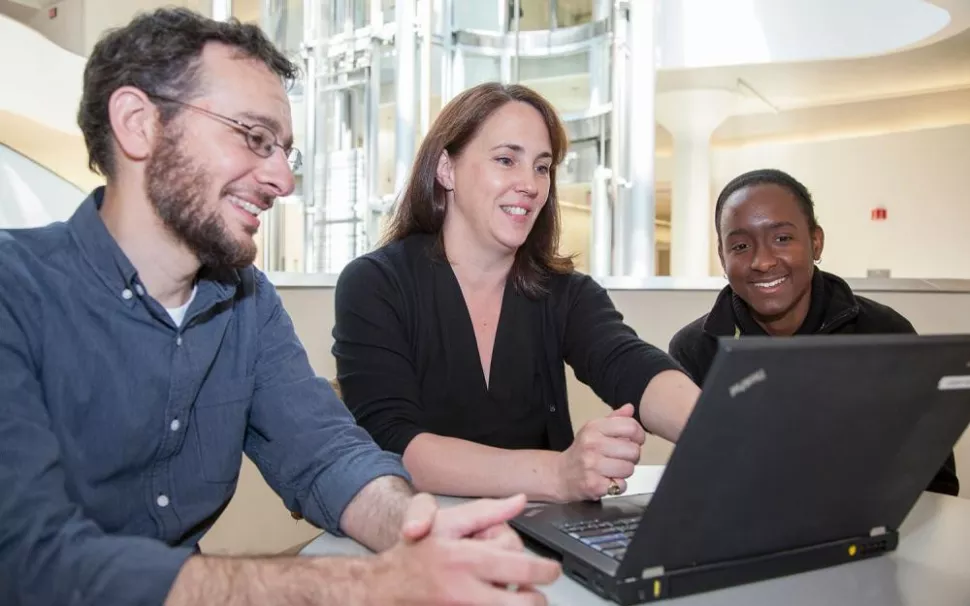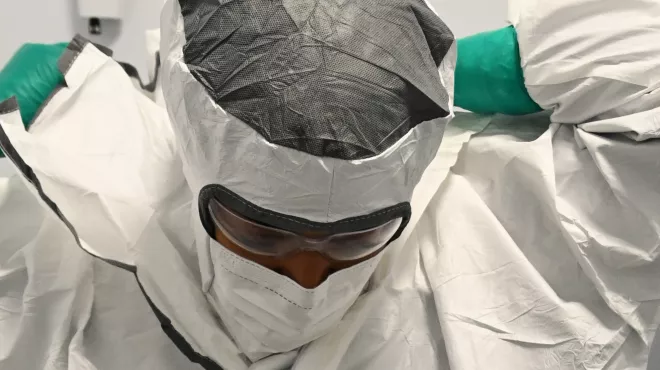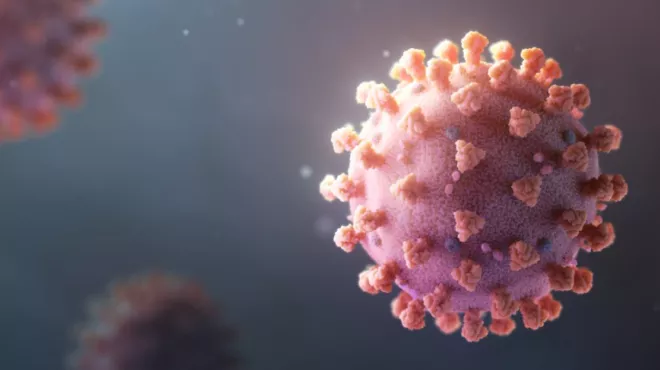I spend a lot of time looking at mini-guts under the microscope. These models mimic our intestine in form and function, and I try to discern if they are healthy. Each one resembles a flower, with petal-like structures growing from a central sphere. These “branches” form as intestinal stem cells divide and differentiate.
Two years ago, I never imagined that I would have the opportunity to work with such a cool 3D culture system.
At the time, I had just received my undergraduate degree in chemical engineering from Howard University, and I had only a single biology course under my belt. But I knew that I wanted to transition to bioengineering. And I was up for a challenge. As Hellen Keller once said, “Life is either a daring adventure or nothing.”
I am originally from Antigua and Barbuda, a twin island nation in the eastern Caribbean. Like most children, I was inquisitive. But I never grew out of this phase. My mother deserves an award for patiently answering thousands of “what if” questions over the years. This curiosity led me to pursue a degree in science and engineering.
I was initially drawn to chemical engineering, but then I completed a summer research experience after my junior year that exposed me to the interface of engineering, biology and medicine. I found it incredibly exciting. I started researching bioengineering graduate programs and considered applying, but I learned that they require biology skills and expertise.
Luckily, I was accepted into a post-baccalaureate program run by the Novartis Institutes for BioMedical Research (NIBR) and the Massachusetts Institute of Technology (MIT) and was able to immerse myself in the world of biology. At NIBR’s headquarters in Cambridge, Mass., I’ve been able to get great hands on training. And I’ve taken genetics, biochemistry, and cell biology classes down the street at MIT. I also have a great mentor at NIBR—Elizabeth Wiellette, who is very patient with me. She has taken the time to explain a number of biological processes and pathways. And she’s helped develop my critical thinking skills. We’ve spent hours discussing how to generate and interpret graphs for RT-PCR data alone.
So how did I learn how to build mini-guts? When I first arrived, I shadowed Sina Mohammadi, a postdoc in Elizabeth’s lab, and he taught me how to passage and culture intestinal tissues. He showed me how to break apart a mini-gut and isolate single stem cell containing compartments called crypts. The crypts are plated in a gelatinous protein mixture called Matrigel that resembles the complex extracellular environment found in living tissues. Sina taught me the optimal plating density and showed me how to supplement the Matrigel with special growth factors. I monitored the cultures with him and learned to spot a healthy, branched mini-gut.
My project ultimately focused on the factors that govern intestinal stem cell identity in culture. Elizabeth’s lab has observed that intestinal stem cells behave differently, depending on their source. Stem cells from one end of the intestine express different genes than stem cells from the other end. We are trying to learn more about this specification. I conducted a compound screen (using epigenetic modulator compounds) to see if I could transform intestinal stem cell identity in culture.
I have completely evolved in my thinking and in the way that I approach scientific questions. I owe this growth and my ever increasing interest in the field of biology to Elizabeth, Sina and the training from NIBR and MIT. I recently accepted an offer to a bioengineering PhD program at Stanford, and I’m excited to start. During the grad school interview process, a professor mentioned that she thinks of her students as pluripotent stem cells, unspecialized and capable of going in many different directions. I am excited to see where the next phase of my training takes me.
Learn more about NIBR’s Gap Year Scholar Post-baccalaureate program and opportunities for recent college graduates.

